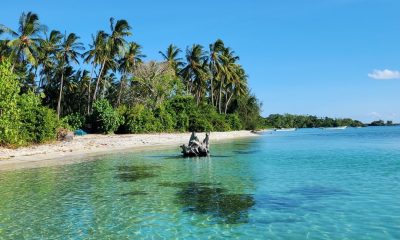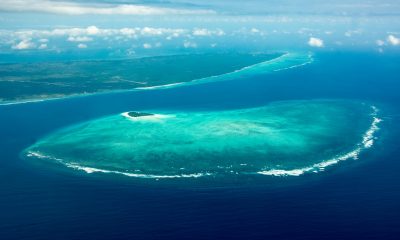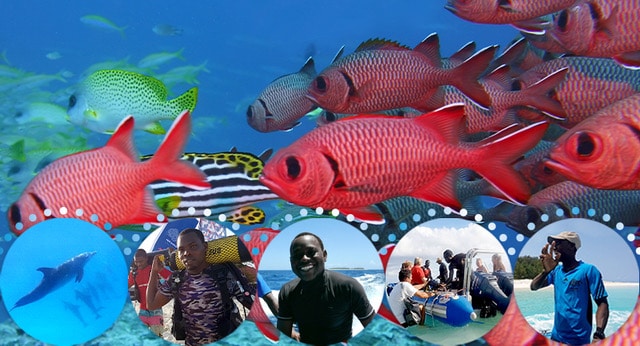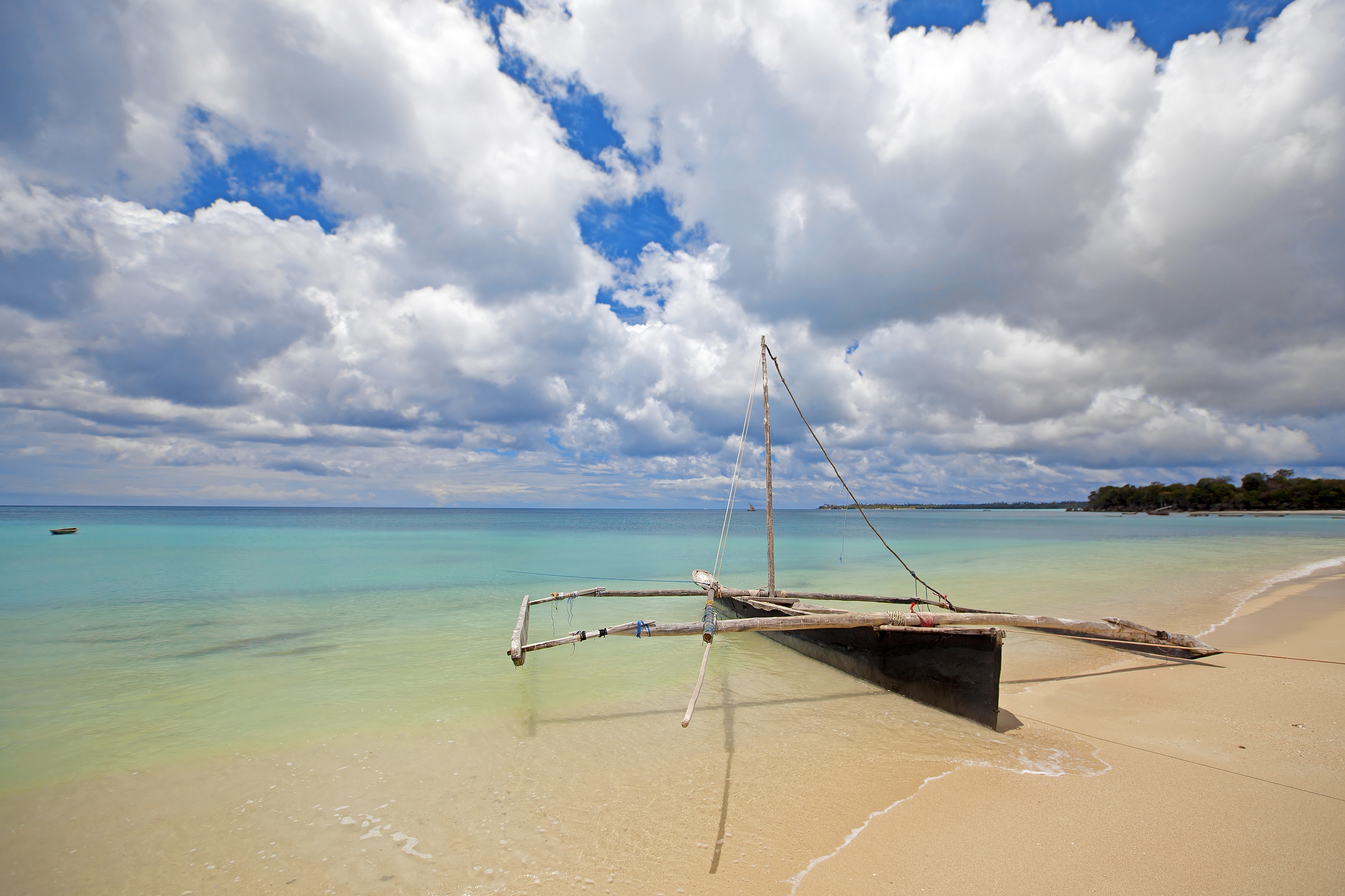Travel Stories
Dive and Safari in Tanzania
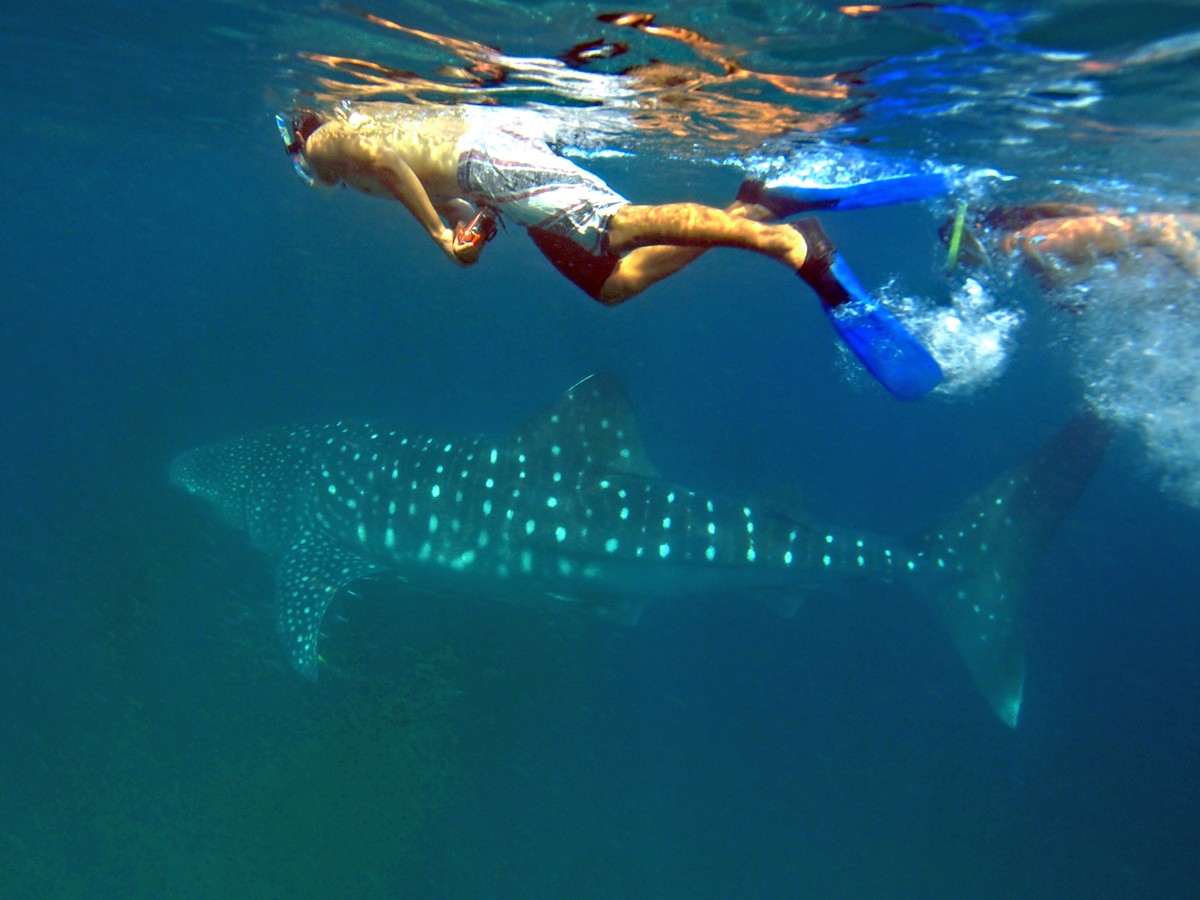
Christopher Bartlett combines his love of diving and safari when he travels to Tanzania and explores the islands of Zanzibar, Pemba and Mafia
Where in the world could you swim with a whale shark one lunch time and then watch elephants playing in the water and lions dozing in the shade the next morning? In the east African nation of Tanzania. Sure, it’s a long way to go, but, boy, is it worth it.
Whether you are a diver who would like to spend a few days on safari, or a safari nut who would like to spend a few days diving, Tanzania and its islands have plenty to offer and excellent air links make getting around a cinch. If you’re mad about both like me, then it’s a dream come true. In fact I’ve been seven times and the next trip is already planned.
There are three main islands off the coast, basking in the warm waters of the Indian Ocean, each with its particular attractions. Straight east from Dar-es-Salaam, the main port of entry, lie the spice islands of the Zanzibar archipelago, made up of bustling Unguja (often erroneously referred to as Zanzibar), and the hillier and sleepier Pemba. Slightly to the south is the flat and sparsely populated Mafia island, home to the Mafia Island Marine Park.
It takes a mere fifteen minutes to reach Stone Town, the Zanzibari capital, from Dar with Zan Air flying up to three times daily. History buffs love Stone Town, with its labyrinths of narrow streets and alleyways flanked by crumbling mansions and mosques. Once the centre of the East African slave trade, its main attractions other than the old slave market (now topped by the Anglican Cathedral) are the House of Wonders, the Omani Fort, Tippu Tip’s house, the Hamamni Persian Baths, massive Zanzibari wooden doors, and Mercury’s restaurant and bar (Freddy of Queen fame is Unguja’s most famous son) by Big Tree. Forodhani Gardens comes alive at night with a food market specialising in fresh grilled seafood skewers, though there are plenty of good eateries that provide reasonably priced food and a table to eat it at.
If you are not into history or being offered CDs of local music twenty times a day, then head straight out to one of the two best dive bases on the island; Kendwa to the northwest, and Matemwe to the northeast. I decided that Stone Town’s attractions could wait and caught a ride up to Kendwa, checked-in to Sunset Bungalows, and headed straight down to the dive centre to catch the morning dive.
30 minutes later I jumped into a RIB, skirted round the north of the island bouncing in the light chop, and made it to Mnemba Atoll in just under 30 minutes. Mnemba is a shallow expanse of coral reef with a tiny heart-shaped island on its western fringe surrounded by some steep drop-offs, and is the “must-dive” of Unguja. With viz 20 metres or better, there are a multitude of sites to dive, and its calm conditions make it suitable for novices and experienced divers alike. We dropped in on Wattabomi, in the channel between the atoll and the main island, with fish-covered lattice corals carpeting the seabed. Moving north from bommy to bommy we came across three green turtles having a snooze, heads tucked in a crevice before gently profiling upwards over a sandy patch for our safety stop, with hundreds of garden eels swaying to the tune of an invisible snake charmer.
West Bank is another good site, and started at six metres, rolled down into a 40-metre drop-off, and was covered in reef fish, hard and soft corals, and large schools of fusiliers. There were the intriguing juvenile black snapper, damsels in the staghorn coral, royal and emperor angelfish, chocolate dips, blue-spotted rays, and two-bar clownfish. Thumbing through the fish book back at the dive centre it was a case of “Saw that, saw that, saw that, loads of them, two of them, few of those, etc…”. However, due to its popularity, Mnemba can get quite busy. Whilst it is rare to see other divers under water, there are plenty of snorkelling boats puttering around occasionally spoiling the feeling of having a private audience with the fish.
Quieter local sites include Kichafi and Haji reefs and their extensive lattice coral formations, peacock mantis shrimp, magnificent anemones and resident skunk anemonefish and leafish; Nankivell has giant plate corals in fascinating formations, rays, medium-sized groupers; and the Hunga Reef with its interconnected bommies and a huge variety of hard and soft corals, reminiscent of a fantasy world, and a monster rock lobster hiding in a cave, only its giant antennae visible. Hunga was home to even bigger schools of snapper, and the impressive crocodile flathead that can be found in significant numbers resting on the sandy bottom in gullies and between bommies. Rare finds included seahorses, a Mauritius scorpionfish, and a Weedy scorpionfish, 10 minutes from the dive centre. The viz can close in, down to 10 metres, but I used it as an excuse to look for macro life, and wasn’t disappointed, with an undescribed, nearly translucent cleaner shrimp and some bright red Durban dancing prawns putting on a fascinating show on my last dive before I returned to Stone Town to fly north.
[wppa type=”slideonlyf” album=”15″ align=”center”][/wppa]
PEMBA ISLAND
The 30-minute half-empty flight yielded picture-postcard aerial shots of Mnemba atoll, and uninhabited islands and reefs before touching down in Chake Chake, Pemba’s biggest town, half-way up the west coast at the end of a long mangrove-lined creek. The airport is a small ramshackle affair, and despite a plethora of attractions including atmospheric ruins, primeval forest, unique bird species, deserted beaches, and some of the best diving in the Indian Ocean, Pemba often hosts less than 100 tourists at any given time.
Chake Chake has the only ATM on the island and is the main commercial centre, but don’t expect to find a supermarket. There are several narrow streets of small shops, many selling khangas (the local sarong) and fabrics, tailors, and the odd local takeaway with soggy chips and chewy meat skewers. There is a market with fresh produce, fishmongers are often seen wheeling their goods around in the baskets of their bicycles, and it’s well worth a wander round the dusty streets. Other than the daladalas (public transport on flatbeds fitted out with bench seats and a low roof), the only traffic to watch out for around the market might be the odd ox-cart. A few hundred metres north of Barclays Bank I went past the main mosque, where a kick-about game of football was occasionally interrupted by grazing cattle straying into the penalty area.
The lack of tourism and low coastal habitation have helped keep Pemban reefs in good condition. During the European summer when the cooler water is coming up there are plenty of rainbow runners, kingfish, sailfish, yellowfin tuna, pilot trevallies, and bigeye trevallies and they like the slightly cooler water coming up from the deep channel between the island and the mainland between May and November.
Renowned marine biologist and author, Dr Ewald Lieske, thinks that the three gaps of Uvinje, Fundo, and Njao are very special, partly due to the diversity of fishes, marine scenery, and good coral health, and because there are no people that impact the kindergarten as it is too deep.
In an interview in 2010 he said “these three gaps always have something to offer the diver. Good coral growth, good fish life, and sponge growth. That is important for diversity, these big barrel sponges and finger sponges. Uvinje has a very good fish count. It is better than 60 places that I have seen on an expedition in the Maldives in Spring 2007 with 16 biologists. And that is saying something.” It certainly is, and the sheer, coral-covered walls of these gaps are the main reason I keep coming back here.
Swahili Divers and the Kervan Saray Beach eco-resort on the northwest coast are run by Farhat Jah, a seemingly eccentric mixture of Turkish and Indian heritage with a British upbringing, and his Dutch wife, Cisca. Known by locals as Mr. Raf, and just Raf to anyone else, there is something of a young Basil Fawlty in him that, whilst a little surprising initially, is ultimately endearing. The accommodation was built in 2008 from local materials, and the quarry where the bricks were cut is, well, a stone’s throw away. It is the best priced on the island with both dorm beds and double suites, and good value packages. Food is wholesome and filling, and is locally-sourced and cooked with love on charcoal stoves (chocolate biscuit cake a speciality).
As the RIB zipped across the top of the flat sea, taking us to Deep Freeze, Raf regaled me with stories from ten years on Pemba. He pioneered much of the diving from the island, and has discovered many of the sites himself, hence the odd names. You’ll find no Aquarium here. Deep Freeze, Slobodan’s Bunker (after the ex-Serbian warmonger), Egger’s Ascent, and Emilio’s Back Passage to name a few. With a wealth of knowledge of the reefs and conditions, years of experience, and a passion for underwater photography and videography, you can pick up a host of tips from Raf, provided you can keep up with the rapid-fire conversation.
The ride had been soothing, re-enforcing the remoteness of this small island 50 kilometres off the coast of one of the poorest countries in the world. We passed local in sailing dhows or dugouts, fishing teams of up to ten men swam nets into a circle, slapping the water as they went to scare fish into the net. A lone spear fisherman here and there in Jacques Cousteau mask and an elbow-grease-powered spear hunted for dinner.
Looking down as we kitted up, the table corals twenty metres down were clearly visible. Backwards roll, hot tub, OK, going down. Equalize, all together? look around. W-O-W. With a capital W. On one side was a wall, like the top of a submerged mountain, covered in hard and soft corals of all descriptions, positively teeming with fish. On the other, the bluest blue, near perfect viz, dropping down, and down, and down. Lucky there’s no point talking underwater, because I was speechless. There was not one moment when there was not something to watch. The surface interval snack of still-warm crepes was taken on a deserted island of fossilized coral and white sand before heading off to Slobodan’s Bunker, best described by looking down on your hand with digits splayed, each gap a ravine in the reef full of marine life. Skirting round the end of one finger, the faint but unmistakeable outline of a hammerhead cruised past in the distance.
Sharks and rays are not everyday occurrences here, but I seem to bring luck with me. The following day, at Le Trek, we watched four Napoleon Wrasse pass below us and a school of barracuda cruise by as we kept the wall left shoulder. Then one of the five other clients started babbling and bubbling loudly, pointing back to the right. And along came a six-metre wingspan Manta, accompanied by the largest and ugliest old cobia I have ever laid my eyes upon. She glided by on the outside to the edge of visibility, then turned, slowly soaring back, under me and up over the group.
Over the next two days, I had the depths and the schools of big-eye jacks of Snapper Point, the barracudas, grouper and assorted morays at Trigger Wall and Trigger Corner, and the pipefish of Murray’s Wall and the eels, nudibranchs, and anemonefish of Egger’s Ascent and Chelsea Gin and the gazillion fish of beautiful Manta Point (but no more manta luck) to play with. Dives were broken up by picnics on tidal sand islands and incredible coves in cyan waters under cloudless skies. It was blissful; more dream diving.
Maybe it’s a mix of the remoteness of the island, the remoteness of Raf’s sites, and a touch of the dreamer in me, but the diving here felt like real adventure, as if all I needed was a red woolly hat and I was the re-incarnation of Commandant Cousteau. There was little time for dreaming though, as it was time to indulge in some more island-hopping, via Stone Town and Dar, and venture into the unknown to check out Mafia Island.
MAFIA ISLAND
Mafia island lies 30 minutes south-west of Dar-es-Salaam by light aircraft and has two main attractions: snorkelling with the seasonal whale sharks off the east coast of Kilidoni from December to March, and diving on the outer reefs of the west coast and a couple of passes on the edge of Chole Bay, the location of several dive lodges.
Kinasi Lodge
is the pick of the bunch, with a beautiful pool and beach, thoughtfully appointed rooms, and plentiful gourmet cuisine. Owner Peter Byrne is a committed environmentalist and the lodge has solar water heating, biogas, composting and grey water recycling projects on the go. With only 13 suites spread around the large grounds, it is easy to relax and feel pampered and for those who would like further pampering, there is a spa and massage centre on site with a resident Thai masseuse and masseur. In terms of a luxury to price ratio, Kinasi Lodge is certainly one of the best places I have visited, anywhere.
The totally chilled atmosphere is reflected throughout. Diving is carried out from a traditional wooden dhow powered by outboards. Departing after breakfast, lunch is generally taken on the boat between dives, unless tides dictate an early start in which case a hearty mid-morning snack is the order of the surface interval and late lunch is taken on returning to the lodge.
Kinasi Pass is relatively barren in terms of coral when compared to Pemba, but it has a surprising quantity of fish – snappers are plentiful, morays and schools of barracuda are common, and it is rare to not see at least one large grouper per dive here. This is due to the tide that brings in fresh sea water and nutrients every twelve hours, which also means that it is important to dive it on a slack tide so as to get the best visibility and the least current.
Of the reefs outside the pass to the north, Dindini caves north and south are a long series of overhangs in the rock wall that drops from the reef top at six metres down to the bottom at around 30 metres. Visibility is nearly always over 20 metres here and often more, and the overhangs are favourite haunts of large potato groupers. These cuties can grow up to two metres long and 200 kilos, and often treat divers with curiosity. Twice they happily hung around to have their picture taken and show that they were not disturbed by our presence. There is also good macro-life on the walls, with plenty of whip corals and resident gobies. The sites at Gina’s Pass and Juani are covered in soft purple and pink corals and schools of blue-lined, five-lined, and Bengal snapper, and are excellent places to encounter turtles.
On my last full day we headed over to the west coast as it was whale shark season. Between late November and March plankton blooms occur in the channel between the island and the Rufiji river estuary, attracting the biggest species of fish in the ocean on an almost daily basis. On a custom-built boat with metre-wide flat pontoons we headed of in search of them. Spotting the dorsal fin of a surface-feeding sub-adult, the skipper positioned us in its path and in we went. Finning alongside a four-and-half-metre male, I snapped away hopefully, the sunlight over my shoulder making viewing on almost impossible, trying to catch the yellow fish riding its bow-wake. Once it had moved on, the boat picked us up and started to us further ahead again, when another one popped up 15 metres away, followed by a third. In total we probably saw five or six individuals, and during one quiet five-minute spell, a devil ray turned up and started doing underwater loop-the-loops lest I get bored. Fantastic.
But what about these elephants and lions? Well the so-called Northern Circuit has the world famous and unforgettable Ngorongoro Crater, the Serengeti and its massive migration, and the lesser known but most enjoyable Manyara and Tarangire National Parks. The former is a UNESCO World Biosphere Reserve and home to the lake of the same name and huge flocks of flamingos and pelicans and its famous tree-climbing lions, the latter has its massive and fantasy-world baobab trees, herds of elephants, and over 500 bird species. Both are also excellent for most African mammal species, though the UN World Heritage Site Ngorongoro Crater is the only place where black rhinos can be found in Tanzania.
The south is home to the very accessible Mikumi National Park and the beautiful and little-visited gem of Ruaha, the continent’s largest National Park. This rolling wilderness, studded with the great angular-branched baobab trees, and intersected by the Ruaha river, is known for its magnificent elephant population, huge herds of buffalo as well as for other mammals and, in particular, its bird life. With personal Park fees at 25 USD instead of the 100 USD charged at the flagship parks in the north, and with access from Dar-es-Salaam by vehicle, Ruaha and Mikumi are attractive options.
As well as diving and safaris there are also treks with donkey portage through the Ngorongoro highlands to splendid Lake Natron and its flamingos, the Olduvai Gorge, where a 1.8 million year old hominid fossil was unearthed, and Ol Doinyo Lengai, a 2878-metre active volcano. For those who like a real challenge, 4566-metre Mount Meru in Arusha National Park is particularly steep in parts, and of course there is the climb to Uhuru Peak, the highest point on the continent atop Mount Kilimanjaro.
Where to Stay
Unguja
Stone Town: Stone Town Café has doubles at 90 USD per night, The Tembo Hotel is on the beach with doubles at 130 USD, Dhow Palace’s deluxe doubles cost the same and are more luxurious but don’t have the beach, Emerson Spice Hotel is arguably the best boutique hotel in a town in Africa and costs 250 USD for a double, and the sumptuous Serena Inn starts at 285 USD.
Kendwa: has a large beach that is ideal for bathing even at low tide (unlike the east coast), offers a range of places to stay, ranging from thatched bandas (huts) to air-con en-suites. Sunset Bungalows are next to the Scuba-Do dive centre (60 USD for an en-suite double with a traditionally huge Zanzibari bed, 98 USD for a deluxe beach bungalow with air-con). For those looking to save every cent, Kendwa Rocks has very basic 30 USD thatched huts.
Diving: Scuba-Do 10-dive packages with full equipment hire over five days come to 575 USD, a double tank dive with kit is 135 USD.
Pemba Island
Kervan Saray Beach / Swahili Divers have full-board doubles from $110 USD pppn, based on two sharing in the low season. A six-night full board ten-dive package starts $1850 USD per person in high season. They also have two budget rooms at $85 USD pppn and 7-night dorm packages that include 10 dives from $980 USD
Fundu Lagoon is a luxurious resort an hour south of the airport accessible by road and then boat. It’s all-inclusive packages start at $450 per person per night including wines, beers, and standard spirits, diving is $75 per dive.
Mafia Island
Kinasi Lodge provides full board for $160 USD pppn, 10 dive packages go for $480 USD. Park fees are $20 USD pppn, payable at the park entrance on the way to the lodge. There is also a $1925 USD package with 7 nights’ accommodation, 10 dives, park fees, and flights to and from Dar-es-Salaam.
Whale Shark Snorkelling
$60 USD per person for the morning.
Flights
Zanair are the best for flights between Dar, Arusha, Stone Town and Pemba. Dar to Stone Town is $80 USD, Stone Town to Pemba $101 USD, Dar to Pemba $140 USD. Coastal Aviation operate these routes too.
Coastal Aviation fly between Dar and Mafia for $120 USD and Stone Town and Mafia (via Dar) for 150 USD.
Safaris
There are hundreds of safari companies in Tanzania but none of them have the combined diving and safari expertise of Indigo Safaris who put together tailor-made trips for budget and five-star lodge travellers alike. www.indigosafaris.com – info@indigosafaris.com
Blogs
Northern Red Sea Reefs and Wrecks Trip Report, Part 3: The Mighty Thistlegorm

Jake Davies boards Ghazala Explorer for an unforgettable Red Sea diving experience…
Overnight, the wind picked up, making the planned morning dive a bit bumpy on the Zodiacs to the drop point on Thomas Reef. There, we would dive along the reef before descending through the canyon and then passing under the arch before ascending the wall with a gentle drift. The site provided great encounters with more pelagic species, including shoals of large barracuda, tuna, and bigeye trevally.
Once back on the boat, it was time to get everything tied down again as we would head back south. This time, with the wind behind us, heading to Ras Mohammed to dive Jackfish Alley for another great gentle drift wall dive before then heading up the coast towards the Gulf of Suez to moor up at the wreck of the Thistlegorm. This being the highlight wreck dive of the trip and for many onboard, including myself, it was the first time diving this iconic wreck. I had heard so much about the wreck from friends, and globally, this is a must on any diver’s list. Fortunately for us, there was only one other boat at the site, which was a rarity. A great briefing was delivered by Ahmed, who provided a detailed background about the wreck’s history along with all the required safety information as the currents and visibility at the site can be variable.

Kitting up, there was a lot of excitement on deck before entering the water and heading down the shoreline. Descending to the wreck, there was a light northerly current which reduced the visibility, making it feel more like the conditions that can be found off the Welsh coast. At 10m from the bottom, the outline of the wreck appeared as we reached the area of the wreck which had been bombed, as our mooring line was attached to part of the propeller shaft. Arriving on deck, instantly everywhere you looked there were many of the supplies which the ship was carrying, including Bren Carrier tanks and projectiles that instantly stood out.

We headed around the exterior, taking a look at the large propeller and guns mounted on deck before entering the wreck on the port side to take a look in the holds. It was incredible to see all the trucks, Norton 16H, and BSA motorcycles still perfectly stacked within, providing a real snapshot in time.

Overall, we had four dives on the Thistlegorm, where for all of the dives we were the only group in the water, and at times, there were just three of us on the whole wreck, which made it even more special, especially knowing that most days the wreck has hundreds of divers. Along with the history of the wreck, there was plenty of marine life on the wreck and around, from big green turtles to batfish, along with shoals of mackerel being hunted by trevally. Some unforgettable dives.

The final leg of the trip saw us cross back over the Suez Canal to the Gobal Islands where we planned to stay the night and do three dives at the Dolphin House for the potential of sharing the dive with dolphins. The site, which included a channel that was teeming with reef fish, especially large numbers of goatfish that swam in large shoals along the edge of the reef. These were nice relaxing dives to end the week. Unfortunately, the dolphins didn’t show up, which was okay as like all marine life they are difficult to predict and you can’t guarantee what’s going to be seen. With the last dive complete, we headed back to port for the final night where it was time to clean all the kit and pack before the departure flight the next day.

The whole week from start to finish on Ghazala Explorer was amazing; the boat had all the facilities you need for a comfortable week aboard. The crew were always there to help throughout the day and the chefs providing top quality food which was required after every dive. The itinerary providing some of the best diving with a nice mixture of wreck and reef dives. I would recommend the trip to anyone, whether it’s your first Red Sea liveaboard in the Red Sea or you’re revisiting. Hopefully, it’s not too long before I head back to explore more of the Red Sea onboard Ghazala Explorer.

To find out more about the Northern Red Sea reef and wrecks itineraries aboard Ghazala Explorer, or to book, contact Scuba Travel now:
Email: dive@scubatravel.com
Tel: +44 (0)1483 411590
Photos: Jake Davies / Avalon.Red
Blogs
Northern Red Sea Reefs and Wrecks Trip Report, Part 2: Wall to Wall Wrecks

Jake Davies boards Ghazala Explorer for an unforgettable Red Sea diving experience…
The second day’s diving was a day full of wreck diving at Abu Nuhas, which included the Chrisoula K, Carnatic, and Ghiannis D. The first dive of the day was onto the Chrisoula K, also known as the wreck of tiles. The 98m vessel remains largely intact where she was loaded with tiles which can be seen throughout the hold. The stern sits at 26m and the bow just below the surface. One of the highlights of the wreck is heading inside and seeing the workroom where the machinery used for cutting the tiles are perfectly intact. The bow provided some relaxing scenery as the bright sunlight highlighted the colours of the soft coral reef and the many reef fish.

Following breakfast, we then headed to the next wreck, which was the Carnatic. The Carnatic is an 89.9m sail steamer vessel that was built in Britain back in 1862. She ran aground on the reef back in 1869 and remains at 27m. At the time, she was carrying a range of items, including 40,000 sterling in gold. An impressive wreck where much of the superstructure remains, and the two large masts lay on the seafloor. The wooden ribs of the hull provide structures for lots of soft corals, and into the stern section, the light beams through, bouncing off the large shoals of glass fish that can be found using the structure as shelter from the larger predators that are found outside of the wreck.

The final wreck at Abu Nuhas was the Ghiannis D, originally called ‘Shoyo Maru,’ which was 99.5m long and built in Japan back in 1969 before becoming a Greek-registered cargo ship in 1980. The ship then ran aground on the reef on April 19th, 1983, and now sits at the bottom at a depth of 27m. Heading down the line, the stern of the ship remains in good condition compared to the rest of the hull. The highlight of the wreck, though, is heading into the stern section and down the flights of stairs to enter the engine room, which remains in good condition and is definitely worth exploring. After exploring the interior section of the ship, we then headed over to see the rest of the superstructure, where it’s particularly interesting to see the large table corals that have grown at the bow relatively quickly considering the date the ship sank. After surfacing and enjoying some afternoon snacks, we made sure everything was strapped down and secured as we would be heading north and crossing the Gulf of Suez, where the winds were still creating plenty of chop.

The next morning, it was a short hop to Ras Mohammed Nature Reserve for the next couple of days of diving. The 6am wake-up call came along with the briefing for the first site we would be diving, which was Shark & Yolanda. The low current conditions allowed us to start the dive at Anemone City, where we would drift along the steep, coral-filled wall. These dives involved drifts, as mooring in Ras Mohammed wasn’t allowed to protect the reefs. As a dive site, Shark & Yolanda is well-known and historically had a lot of sharks, but unfortunately not so many in recent years, especially not so early in the season. However, there was always a chance when looking out into the blue.

The gentle drift took us along the steep walls of the site, with plenty of anemone fish to be seen and a huge variety of corals. It wasn’t long into the dive before we were accompanied by a hawksbill turtle, who drifted with us between the two atolls before parting ways. Between the two reefs, the shallow patch with parts of coral heads surrounded by sand provided the chance to see a few blue-spotted stingrays that were mainly resting underneath the corals and are always a pleasure to see. With this being the morning dive, the early sunlight lit up the walls, providing tranquil moments. Looking out into the blue, there was very little to be seen, but a small shoal of batfish shimmering underneath the sunlight was a moment to capture as we watched them swim by as they watched us.

Towards the end of the dive, we stopped at the wreck of the Jolanda where the seafloor was scattered with toilets from the containers it was carrying. This provided a unique site to make a safety stop, which was also accompanied by a large barracuda slowly swimming by, along with a hawksbill turtle calmly swimming over the reef as the sun rays danced in the distance.
For the next dive, we headed north to the Strait of Tiran to explore the reefs situated between Tiran Island and Sharm El Sheik, which were named after the British divers who had found them. We started on Jackson before heading to Gordons Reef, where we also did the night dive. All the atolls at these sites provided stunning, bustling coral reefs close to the surface and steep walls to swim along, which always provided the opportunity to keep an eye out for some of the larger species that can be seen in the blue. Midwater around Jackson Reef was filled with red-toothed triggerfish and shoals of banner fish, which at times were so dense that you couldn’t see into the blue. Moments went by peacefully as we enjoyed the slow drift above the reef, watching these shoals swim around under the mid-afternoon sun.

The night dive at Gordon’s Reef was mainly among the stacks of corals surrounded by sand, which was great to explore under the darkness. After some time circling the corals, we came across what we were really hoping to find, and that was an octopus hunting on the reef. We spent the majority of the dive just watching it crawl among the reef, blending into its changing surroundings through changes in colour and skin texture. It’s always so fascinating and captivating to watch these incredibly intelligent animals, in awe of their ability to carry out these physical changes to perfectly blend into the reef. Before we knew it, it was time to head back to the boat to enjoy a well-deserved tasty dinner prepared by the talented chefs onboard.
Check in for the 3rd and final part of this series from Jake tomorrow!
To find out more about the Northern Red Sea reef and wrecks itineraries aboard Ghazala Explorer, or to book, contact Scuba Travel now:
Email: dive@scubatravel.com
Tel: +44 (0)1483 411590
Photos: Jake Davies / Avalon.Red
-

 News3 months ago
News3 months agoHone your underwater photography skills with Alphamarine Photography at Red Sea Diving Safari in March
-

 News3 months ago
News3 months agoCapturing Critters in Lembeh Underwater Photography Workshop 2024: Event Roundup
-

 Marine Life & Conservation Blogs2 months ago
Marine Life & Conservation Blogs2 months agoCreature Feature: Swell Sharks
-

 Blogs2 months ago
Blogs2 months agoMurex Resorts: Passport to Paradise!
-

 Blogs2 months ago
Blogs2 months agoDiver Discovering Whale Skeletons Beneath Ice Judged World’s Best Underwater Photograph
-

 Marine Life & Conservation2 months ago
Marine Life & Conservation2 months agoSave the Manatee Club launches brand new webcams at Silver Springs State Park, Florida
-

 Gear Reviews3 months ago
Gear Reviews3 months agoGear Review: Oceanic+ Dive Housing for iPhone
-

 Gear Reviews2 weeks ago
Gear Reviews2 weeks agoGEAR REVIEW – Revolutionising Diving Comfort: The Sharkskin T2 Chillproof Suit



